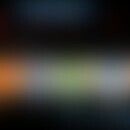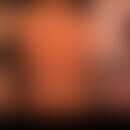Synonym(s)
DefinitionThis section has been translated automatically.
The term "hair conditioner" is used to describe creamy and fragrant care products that care for and smooth skin and hair in an easy and quick way after hair washing, and help to achieve more shine.
General informationThis section has been translated automatically.
The hair is increasingly and structurally stressed by environmental influences such as sunlight, water and wind as well as chemical and physical treatments by hair dyeing, hair toning and straightening artificial curls. Frequent brushing, hairdressing with sharp-edged combs and hot blow-drying also puts a strain on the hair. For this indication, hair care products are offered in the trade (mostly under the term hair conditioners) which are supposed to improve the condition of the hair.
Basically, a distinction is made between hair care products for rinsing ("Rinse-Off" products) or for leaving the hair in the hair ("Leave-In" products). Rinse-Off hair conditioners are worked into damp hair after washing and rinsed out again after a few minutes.
Note(s)This section has been translated automatically.
The basic recipe of hair conditioners and hair treatments is generally based on a flowing oil/water cream preparation, an emulsion. Such flowing emulsions (lotions) should have a good spreadability so that they are easily spread on the scalp after their application or flow along the hair shafts over the scalp. They consist of fatty alcohols, emulsifiers, quaternary ammonium compounds and, for the most part, water. Their pH value is generally adapted to the pH value of the scalp, i.e. slightly acidic.
Fatty alcohols in their native form (natural fatty alcohols) are monovalent, linear aliphatic alcohols with 6 to 22 C-atoms per molecule (note: higher molecular fatty alcohols are called wax alcohols). In cosmetics mainly saturated linear fatty alcohols with a chain length of 12 to 18 C-atoms are used (e.g. octadecanol = stearyl alcohol - C18H37OH). Besides the fatty alcohols also oil and wax-like substances like artificial aliphatic hydrocarbons like paraffins or the natural beeswax are used. Other important ingredients are thickeners and preservatives as well as perfume oils.
A further hint: Strained hair forms negative charges on the surface. Antistatically effective hair care products balance these out again with special cationic care substances (quaternary ammonium compounds). Such polar substances attach themselves to the negative charges of the hair and thus form a thin layer on the damaged hair surfaces. This improves combability and gives the hair shine.
An example of this is the surfactant cetyltrimethylammonium chloride. For some years now, silicones and silicone derivatives have been increasingly used as conditioning agents. As with other hair care products, other ingredients include thickeners, preservatives and perfumes.
Hair treatments are generally much more viscous than hair conditioners and are therefore often offered in jars (Cave: microbial contamination).



